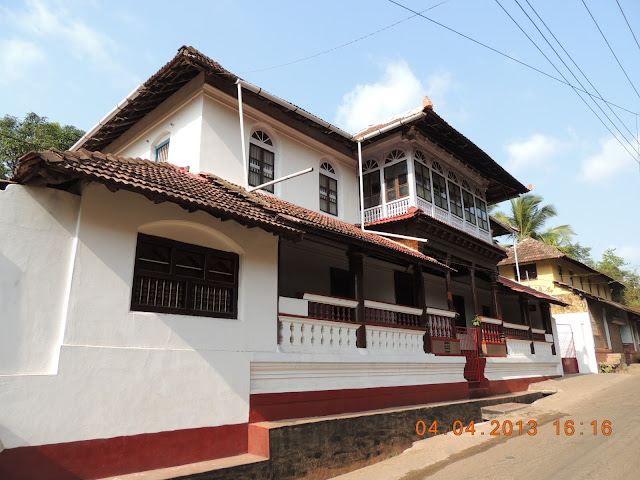Mulki was originally known as Volalanke or Kotikere, Kanakadas ( 1508 -1606 ) the founder of Bhakti cult renamed the port and fort township as Moolikapura, which signified the land of herbs, which was later shortened as Mulki. Mulk also meant native place in Arabic. The edicts of Emperor Ashoka referred to this territory as Satiyaputo.
The river bank of Sambhavi with its tributaries formed an excellent platform for trading inland. Spices, Cashewnut, Herbs, Agricultural and forest produce with the Arabian countries. The sea faring Bearies, Mappilas, native traders exported clove which was sought after for its various uses, pepper along with clothes, furniture, precious stones, sandlewood, incense sticks,coconut, jewelleries made of ivory and diamond. The value of exports was much higher than the value of imports. Some of items imported were dry fruits, perfumes, coral, scented oils, velvet and horses.
Mulki enjoyed a relatively peaceful reign except during the reign of Tipu Sultan ( 1782 - 1799 ) wherein persecution of Christians and conversion of Hindus took place. Some churches and temples in the area were destroyed.
Bappanadu Durgaparameswari temple, was constructed as thanksgiving by Bappa, in the 6th century, a muslim merchant who prayed for his vessel laden with imported goods to be rescued from thunderstorm. Some locals suggested that he should invoke the blessings of the local diety and promise to construct a temple in its honour. The merchant prayed and diety helped to rescue storm struck shipping vessel from being drowned. The Bappanadu temple trust carries out its annual festivity in celebration of this event.
During the reign of the Bhojraya Chowta II ( 1470 - 1510 AD ) which coincided with rule of the Vijaynagar Emperor Krishnadevaraya Kotikere basadi seems to have been built. The Samanths of Padapanambur took over reign of the territory after the fall of Vijaynagar Empire in 1565 AD. Mulki town had an important role in importing the horses from Arabian countries along with Bhatkal town.
The ancient vestige of trading and fortress are still kept alive in residences, vijaya college and its surroundings. The laterite brick walls and sambhavi river banks tell their own story of a town which was once a prosperous trading hub. The construction of the bridge across the river Sambhavi on NH66 brought the death knell of the port town Mulki.
The river bank of Sambhavi with its tributaries formed an excellent platform for trading inland. Spices, Cashewnut, Herbs, Agricultural and forest produce with the Arabian countries. The sea faring Bearies, Mappilas, native traders exported clove which was sought after for its various uses, pepper along with clothes, furniture, precious stones, sandlewood, incense sticks,coconut, jewelleries made of ivory and diamond. The value of exports was much higher than the value of imports. Some of items imported were dry fruits, perfumes, coral, scented oils, velvet and horses.
Mulki enjoyed a relatively peaceful reign except during the reign of Tipu Sultan ( 1782 - 1799 ) wherein persecution of Christians and conversion of Hindus took place. Some churches and temples in the area were destroyed.
Bappanadu Durgaparameswari temple, was constructed as thanksgiving by Bappa, in the 6th century, a muslim merchant who prayed for his vessel laden with imported goods to be rescued from thunderstorm. Some locals suggested that he should invoke the blessings of the local diety and promise to construct a temple in its honour. The merchant prayed and diety helped to rescue storm struck shipping vessel from being drowned. The Bappanadu temple trust carries out its annual festivity in celebration of this event.
During the reign of the Bhojraya Chowta II ( 1470 - 1510 AD ) which coincided with rule of the Vijaynagar Emperor Krishnadevaraya Kotikere basadi seems to have been built. The Samanths of Padapanambur took over reign of the territory after the fall of Vijaynagar Empire in 1565 AD. Mulki town had an important role in importing the horses from Arabian countries along with Bhatkal town.
The ancient vestige of trading and fortress are still kept alive in residences, vijaya college and its surroundings. The laterite brick walls and sambhavi river banks tell their own story of a town which was once a prosperous trading hub. The construction of the bridge across the river Sambhavi on NH66 brought the death knell of the port town Mulki.











7 comments:
Nice post on a less explored destination. I loved the angles of the photographs.
www.rajniranjandas.blogspot.in
wonderful post!!! the photos are lovely! they take me right there.... I have passed Mulki a number of times, but had no idea of any of this....
Nice post... Great shots...
Niranjan, well in your next visit definitely make it a point to visit some of the destinations covered.
Anuradha i am sure many of us will miss this destination while whizzing past the NH66 on the bridge.
Short but sweet...yes...I was born and brought up in Mulki.
Short and sweet.....yes...I was born and brought up in Mulki. Up until the bridge was built 1n 1962, it was a bustling town with a lot of thriving business. That's evident by the business houses built along the banks of Shambhavi river. Ships used to anchor in the kaDavina baagilu, the first photograph.
Post a Comment